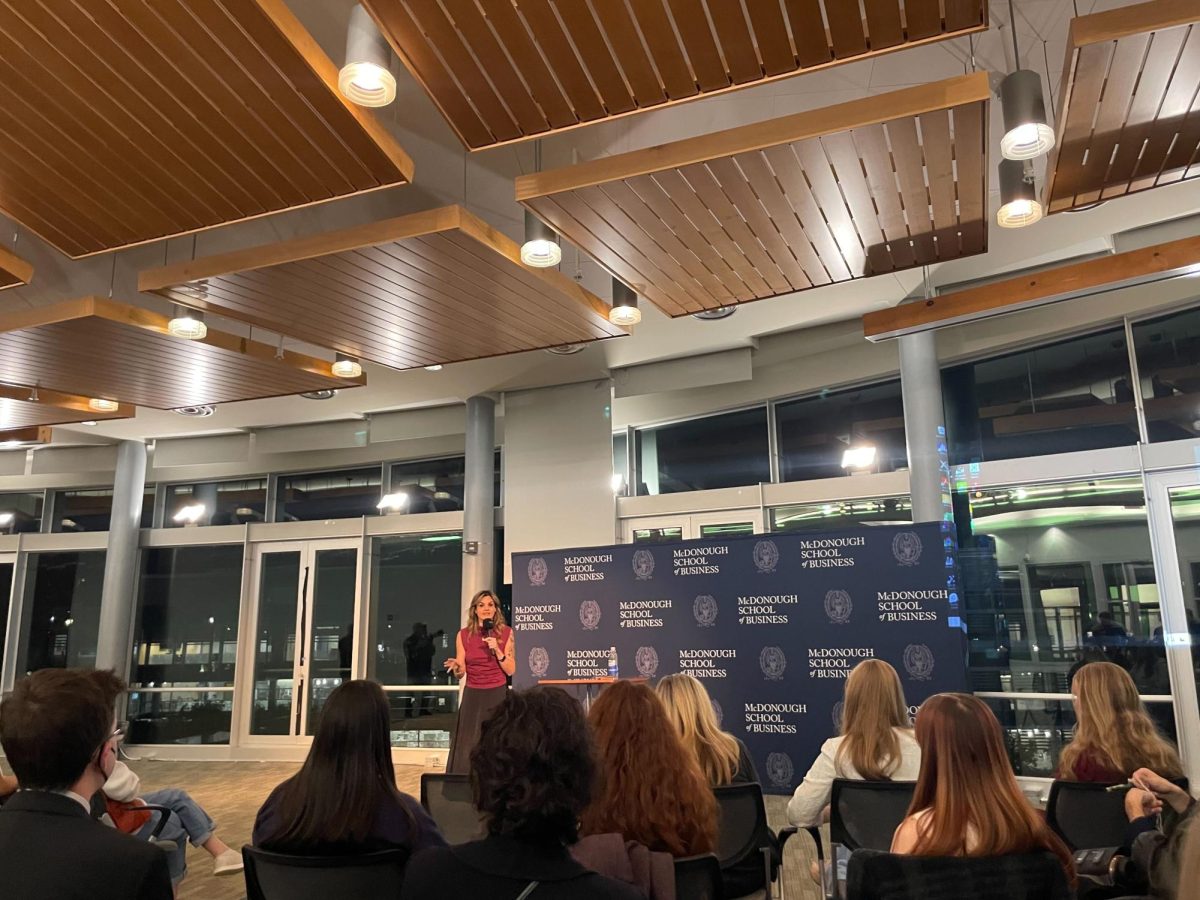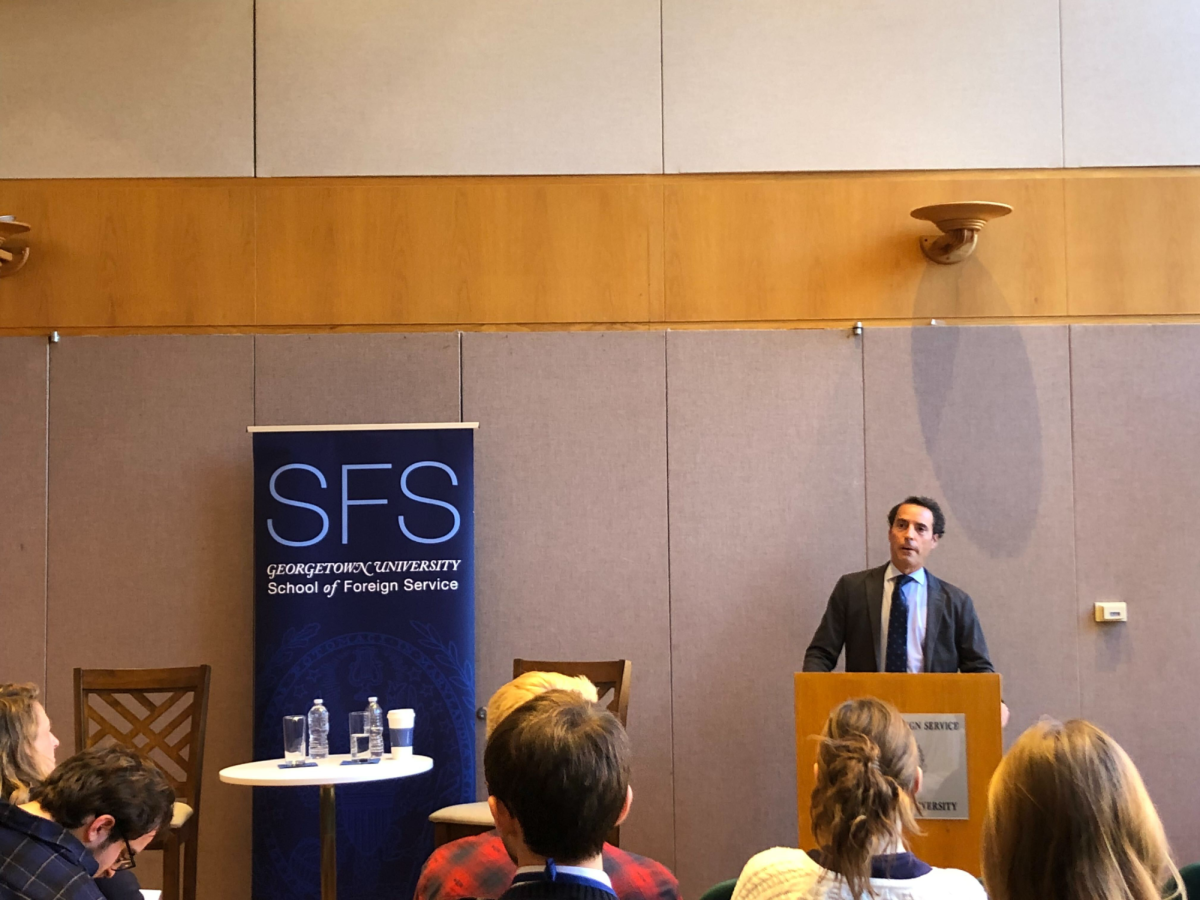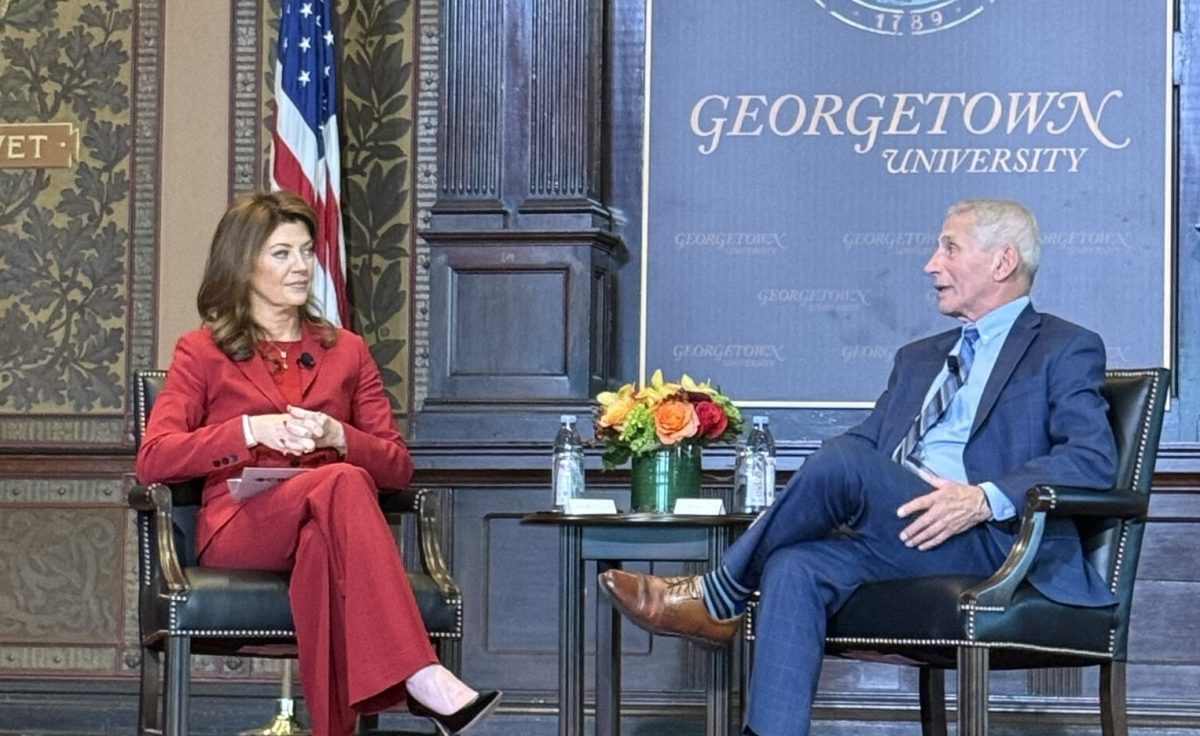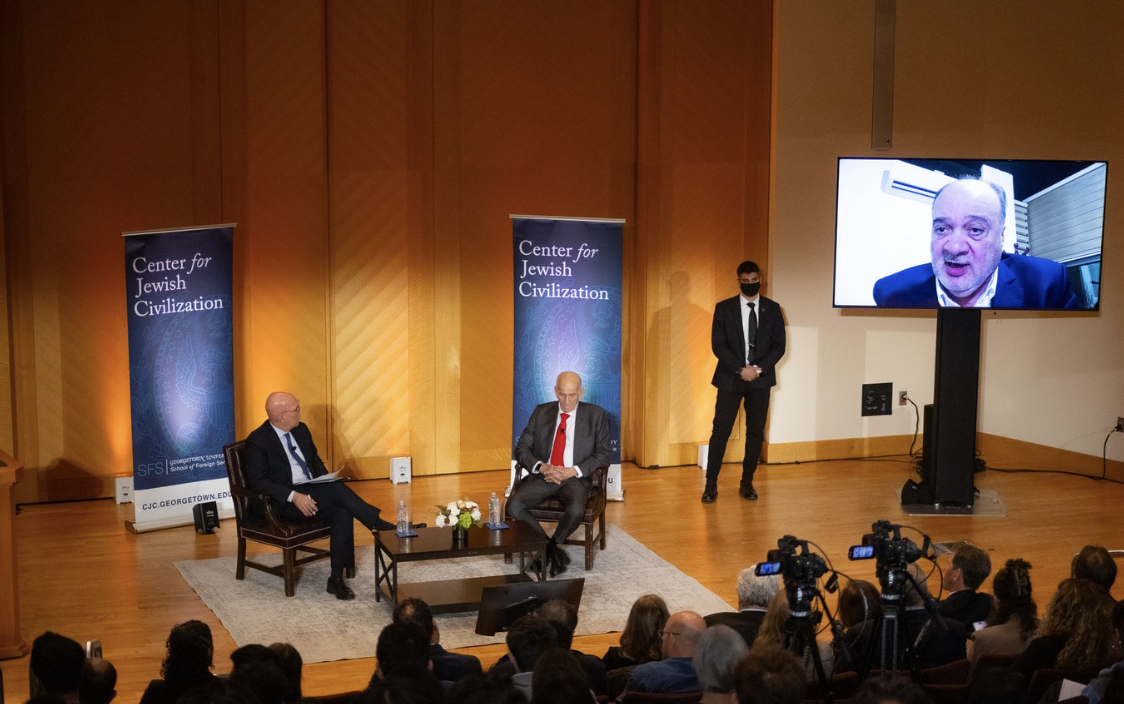A water systems engineer warned against aging U.S. water infrastructure and the gaps left by the new Trump administration’s dismantling of the United States Agency for International Development (USAID), a government organization that distributes foreign aid, in developing global water systems at a Georgetown University event Feb. 10.
Mark White, a water systems engineer, spoke to Georgetown Professor Mark Giordano about his work providing clean drinking water to populations abroad and domestically at an event hosted by the Georgetown University Lecture Fund, a student-run organization that hosts speakers on various subjects. White described his work on water systems throughout the world and highlighted water systems issues in the United States, such as sustainability, technology, governance and finance.
White said many communities hesitate to move away from water bottles in favor of community water systems due to large ticket prices for improving or changing water systems and increased rates for water.
“Certainly it’s cheaper to have your water plant than to buy a bottle of water,” White said at the event. “The amount that you pay for a gallon of plant water is less than you pay for your drinking water, but people don’t want to raise rates — they don’t want to pay.”
White said aging infrastructure makes keeping U.S. water systems sustainable difficult.
“One of the biggest parts of what you don’t see are the pipes in the ground, and those pipes on average are seventy years old and they just age,” White said. “People estimate the average life of a pipe is about 100 years, which means to be sustainable you have to be replacing about 1% a year, and most utilities just aren’t doing that.”
White said the main issue in international water policy is the lack of water availability in developing countries such as Jordan.
“There’s just absolutely no water resources there, and it’s a real challenge,” White said.
In the United States, the renewable water resources per capita is around 9,500 cubic meters per year. Scarcity is defined as 1,000, and absolute scarcity is 500. In Jordan, the available resources are less than 100.

White said water scarcity has significant political implications in countries such as Jordan, which has high immigrant and refugee populations.
“You can get a lot of animosity on why we have these refugees and we don’t have water for our own people,” White said. “So some of these projects are key to stability and being sustainable.”
In 2023, USAID spent $1.2 billion on water-related global projects between disaster aid and sanitation. In Jordan, one of the most water-stressed countries in the world, USAID was funding White’s desalination plant, which would help to alleviate the stress for the country’s 11 million people.
On the dissolution of USAID, White said he thinks other countries will come in and pick up where the US left off.
“There’s certainly other players out there who are willing to invest,” White said. “Now the U.S. is a big player, so are they going to fill all the holes? No one can say.”
White added that he believes there will still be help available in the region despite the recent pullback of U.S. involvement.
“These projects still need to get done — Jordan still needs water, it still needs to be stable,” White said. “I just can’t imagine that those projects don’t get implemented.”
Jackie Bucaro (SFS ’25), the treasurer of the GU Lecture Fund and one of the organizers of the event, said White’s background in the private sector illuminated the non-political aspects of water scarcity.
“On a small scale, this event taught us all about the increasing impacts of climate change on drinking water and the tradeoffs between bottled and tap water, but on a larger scale, it was also a conversation about the influence of political will on clean water provision,” Bucaro wrote to The Hoya. “It’s always important to remember the variety of skills that have to come together to make life-changing advancements in water provision possible.”
White said that despite the challenges of the current landscape, he has hope for the future of water policy.
“I’m always positive,” White said. “We’re going to solve these problems. We’re going to find a way to get through.”







